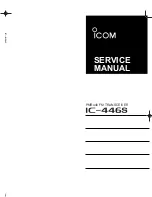
15
BE 57-660 Eclipse Model 700 Guided Wave Radar Transmitter
2.4.1.1 To install a coaxial probe:
1. Ensure that the process connection is the correct threaded
or flanged mounting.
2. Carefully place the probe into the vessel. Properly align the
gasket on flanged installations.
3. Align the probe process connection with the threaded or
flanged mounting on the vessel.
4. For threaded connections, tighten the hex nut of the probe
process connection. For flanged connections, tighten flange
bolts.
2.4.2 Installing a Single Rod Probe
Rigid Models 7zF
Flexible Models 7z1
Before installing, ensure that the:
• Probe has adequate room for installation and has unob-
structed entry to the bottom of the vessel.
• Process temperature, pressure, dielectric, and viscosity are
within the probe specifications for the installation. See
Specifications, Section 3.6.
NOTE: If using a removable single rod, ensure that all pieces are
assembled and connected before installation.
1. Ensure that the nozzle does not restrict performance by
ensuring the following (refer to figure at left):
• Nozzle is > 50 mm (2") diameter.
• Ratio of Diameter: Length (A:B) is 1:1 or greater; any ratio
<1:1 (e.g., a 50 mm x 152 mm, 2"
¥
6" nozzle = 1:3) may
require a Blocking Distance and/or DIELECTRIC
RANGE adjustment.
2. No pipe reducers (restrictions) are used.
3. Probe is kept away from conductive objects to ensure prop-
er performance.
• See Probe Clearance Table below. A lower gain (increase in
DIELECTRIC RANGE setting) may be necessary to
ignore certain objects
• This table is only a recommendation. These distances can
be improved by optimizing the transmitter configuration
with PACT
ware
™
.
②
①
④
③
A
B
Distance
to Probe
Acceptable Objects
<15 cm (6")
Continuous, smooth, parallel conductive surface, for example a metal
tank wall; important that probe does not touch wall
>15 cm (6")
<25 mm (1") diameter pipe and beams, ladder rungs
>30 cm (12")
<75 mm (3") diameter pipe and beams, concrete walls
>46 cm (18")
All remaining objects
















































